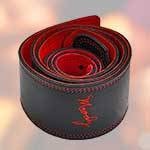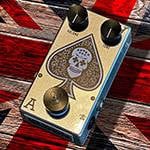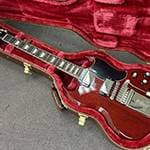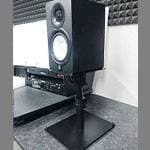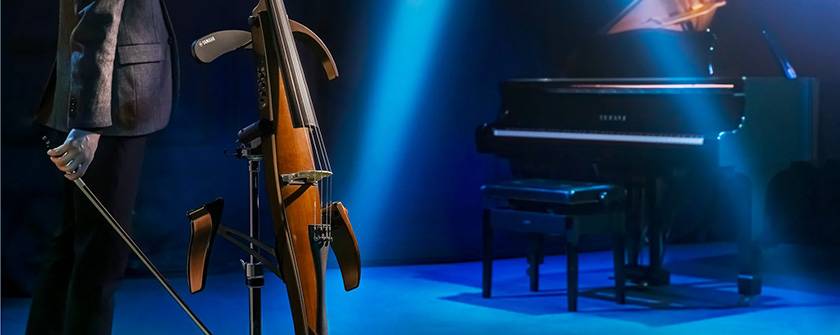
Yamaha has just announced a brand-new model in the Silent Cello series and it’s the first update in 19 years! The new models take over from the long-loved “SVC210” and “SVC110S”, and pre-orders will begin on September 19, 2025!
YAMAHA has already released the product specs online ahead of the reservation launch, so let’s take a look and compare what’s changed!
Here are the newly announced Silent Cello models:
YAMAHA / SVC300C Silent Cello Antique Dark Brown
YAMAHA / SVC300CPW Silent Cello Pearl White
YAMAHA / SVC300F Silent Cello Antique Dark Brown
YAMAHA / SVC300FPW Silent Cello Pearl White
The first impression I got from the new models is that YAMAHA has carried over the basic body design from the previous versions, while the control section, tuning pegs, and other details appear to have been refined.
Also, in terms of special order colors, which were familiar features in the previous series, the Pearl White version is available again, and I personally think it stands out beautifully on stage!
Up until now, Yamaha’s Silent Cello series mainly consisted of three models: SVC50, SVC210, and SVC110S, but with this release, these two higher-end models have both been completely renewed.
So, let’s take a look at how the new and improved version compared to the previous ones, by checking Yamaha’s official spec pages side by side!
YAMAHA SVC300C and SVC210 Silent Cello Comparison
YAMAHA has the official spec sheets for each Silent Cello posted on their website, so I made a comparison chart.
| SVC210 | SVC300C | ||
|---|---|---|---|
| Main feature | |||
| Size | 4/4 | 4/4 | |
| Neck | Maple | Maple | |
| Body | Spruce/ Maple | Spruce/ Maple | |
| Frame | - | - | |
| Knee rest | Japanese beech (Collapsible type) | Japanese beech (Collapsible type) | |
| Fingerboard | Ebony | Ebony | |
| Strings | Heli core (D’Addario) ball end type | Heli core (D’Addario) ball end type | |
| Tuning pegs | Worm gear | Worm gear | |
| Bridge | Maple (Made by Aubert) | Maple (Made by Aubert) | |
| Tailpiece | Made by Wittner/ Ultra | Made by Wittner/ Ultra | |
| Adjusters | 4-piece | 4-piece | |
| Pickup | Piezo Pickup | Piezo Pickup | |
| Controller (Main Body) |
Volume Aux. in (Volume Adjust. incl. ) Reverb (Room/ Hall 1/ Hall2) | LINE OUT Volume/ PHONE OUT Volume, Blend Control, Reverb Control (ROOM/HALL), EQ Control (TREBLE, BASS), Sound Type Switch & Tuner Switch | |
| Input/ Output Terminal | Headphone Output, Lineout, Aux In | Headphone Output, Lineout, Aux In | |
| Power Source | Batteries w/ AC Adapter input | Battery: AA Alkali Battery (LR6) Also 2 nickel-metal hydride battery (sold separately), power adapter: Yamaha PC-3C (Sold separately) | |
| Battery Life (Hours of Continuous Use) |
Manganese battery | (W/ Reverb) Max. 3 hours (W/o Reverb) Max. 10 Hours | - |
| Alkali batteries | (With Reverb) Max. 9 Hours (w/o Reverb) Max. 25 Hours | Max. 7.5 Hours | |
| nickel-metal hydride battery | - | Max. 9.5 Hours | |
| Dimensions (LxWxH) | 1,251mm× 438mm× 243mm (Knee rest unfolded, End pin at shortest height) | 1,251mm x 438mm x 243mm (Chest pad not included) | |
| Mass | 3.9kg (dry cell battery, chest pad included) | Approx. 3.6kg (dry cell battery, chest pad included) | |
| Stereo headphone | Not included | Not included | |
| Case | Soft case included | Soft case included | |
| Bow | Not included | Not included | |
| Chest pad | Included | Included | |
| Other included parts | Audio cable, φ6.3-φ3.5 Jack converter | Not included | |
| Body | Color | - | Antique dark brown SVC300CPW = パールホワイト Pearl White |
| Standby Power | - | 0.1W | |
Yamaha Official Website – SVC210 / SVC300C
First off, the foldable knee rests that were a key feature of the SVC210 are still present in the SVC300C! The body design also gives off more of a natural wood feel compared to the previous model. The official site even describes it as a finish that “lets you enjoy the unique character of natural wood.” That’s definitely a welcome point.
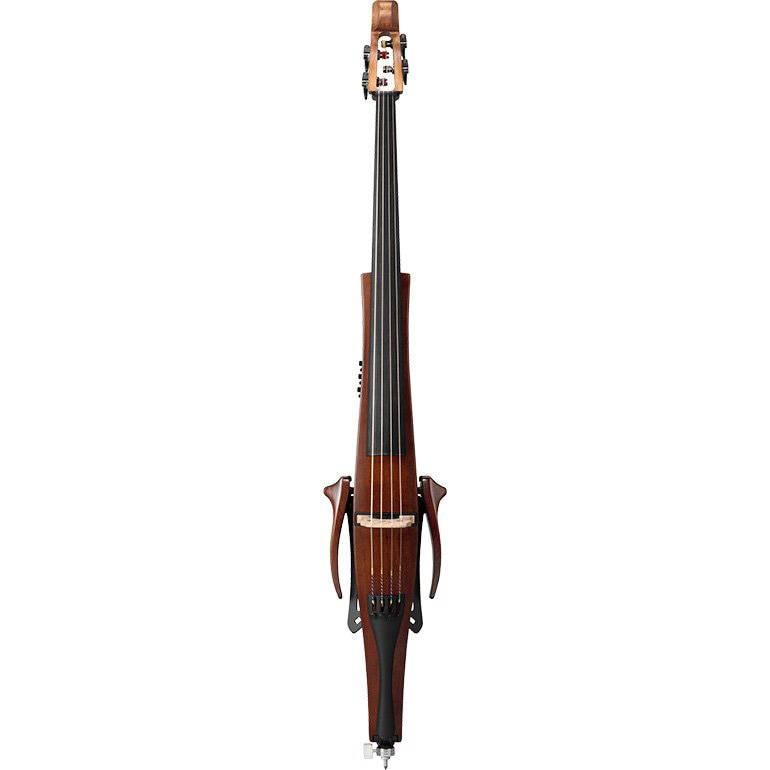
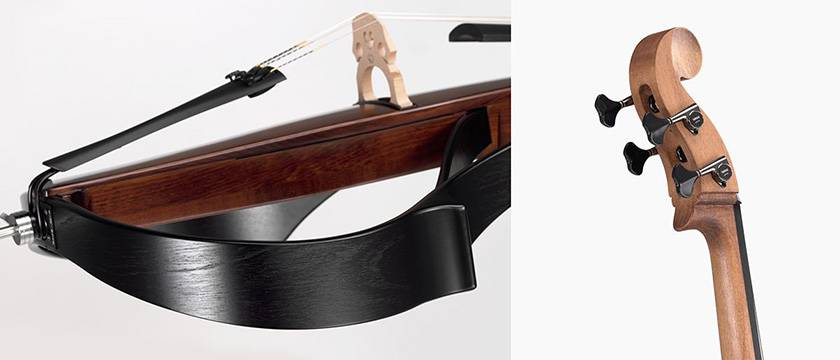
Another major change is in the controls! Features like a blend control, equalizer, and tuner have now been added, none of which were present in the previous models.
Also, reverb level adjustment, which wasn’t available before, is now included, along with TREBLE and BASS EQ controls. With all these updates, it seems like users now have much more freedom in sound shaping and customization.
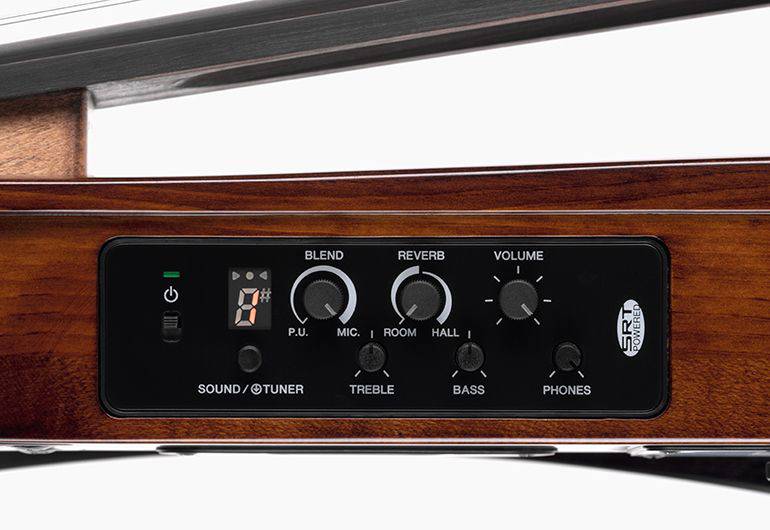
Yamaha SVC300C Instruction Manual – Page 10
In the photo of the control panel, you’ll see on the right the mention of the “SRT Powered System.” According to Yamaha’s official site, this is a proprietary digital technology that:
“Applies the natural tone and body resonance of acoustic instruments, which are analyzed from real acoustic instruments, and in real time are able to play acoustic tones on instruments like the Silent Cello™, which lack a large resonating body.”
In short, it digitally adds the warmth and depth of a real cello’s resonance.
Yamaha Official Website – SRT Powered System for the SVC300 Series
This is the same system that Yamaha already used in electric violins and Silent Bass. Instead of relying on sampled sounds, it enhances the analog signal from the instrument’s pickup with natural resonance. This allows the performer’s own expression and nuance to come through more clearly. It’s definitely something you'd want to try in person!
Other notable improvements include:
- Support for nickel-metal hydride (NiMH) rechargeable batteries (in addition to standard ones)
- A weight reduction of about 0.3 kg, making it lighter and more portable
The body size appears unchanged, so the playability should be just as comfortable as the previous models.
YAMAHA / SVC300C Silent Cello – Specification Summary
- The foldable knee rest from the previous model is still present!
- The body features a finish that emphasizes the natural wood grain and texture.
- The control section now includes newly added features:
- Blend control
- Equalizer (Treble/Bass) - Tuner function
Equipped with the SRT Powered System that’s unique to the SVC series and well-known in Yamaha’s Silent lineup. - Same dimensions as before, but with a lighter build, allowing for natural acoustic-style playing.
YAMAHA SVC300F vs. SVC110S Silent Cello – Comparison
Yamaha’s official site provides spec charts for both models, so let’s take a look at the differences.
| SVC110S | SVC300F | ||
|---|---|---|---|
| Main Features | |||
| Size | 4/4 | 4/4 | |
| Neck | Maple | Maple | |
| Body | Spruce/ Maple | Spruce/ Maple | |
| Frame | Molded Plywood | Molded Plywood | |
| Knee Rest | - | - | |
| Fingerboard | Ebony | Ebony | |
| Strings | Ball end type | Heli core (D’Addario) Ball end type | |
| Tuning Pegs | Ebony | Worm Gear Pegs | |
| Bridge | Maple (Made by Aubert) | Maple (Made by Aubert) | |
| Tailpiece | Made by Wittner/ Ultra | Made by Wittner/ Ultra | |
| Adjusters | 4-piece | 4-piece | |
| Pickup | Piezo Pickup | Piezo Pickup | |
| Control (Body) |
Volume Aux. In (Volume control inc.) Reverb (Room/ Hall 1/ Hall2) | Volume / PHONE OUT Volume, Blend Control/ Reverb Control (ROOM/HALL), EQ Control (TREBLE, BASS), Sound type Switch and tuner switch | |
| Input/Output | Headphone output, Line out, Aux. In | Headphone output, Line out, Aux. In | |
| Power | Batteries/ AC Adapter Input | Power: Alkali Battery (LR6) and 2 nickel-metal hydride batteries (sold separately), power adapter: YAMAHA PA-3C (sold separately) | |
| Battery life (Hours of continuous use)) |
Manganese battery | (W/ reverb) Max. 3 hours (w/o reverb) Max. 10 hours | - |
| Alkali batteries | (W/ Reverb) Max. 9 hours (w/o reverb) max. 25 hours | Max. 7.5 hours | |
| Nickel-metal hydride battery | - | Max. 9.5 Hours | |
| Endpin (LxWxH) | 1,266mm× 430mm× 243mm (Endpin at shortest length) | 1,266mm x 430mm x 243mm (Chest pad not included) | |
| Mass | 3.7kg (Dry cell battery, Chest pad included) | Approx. 3.4 kg (Dry cell battery, Chest pad included) | |
| Stereo headphones | Not included | Not included | |
| Case | Soft case included | Soft case included | |
| Bow | Carbon bow (CBB 301) Included | Not included | |
| Chest pad | Included | Included | |
| Other included items | Audio Cable, φ6.3-φ3.5 Jack converter, rosin | Not included | |
| Body | Color | - | SVC300F = Antique dark brown, SVC300FPW = Pearl white |
| Standby power | - | 0.1W | |
YAMAHA Official Website – SVC110S / SVC300F
The first thing that stood out was that, just like the SVC300C, the SVC300F now includes features that weren’t available in previous models like blend control, equalizer, and a tuner function!
Earlier models didn’t allow for reverb level adjustment, and with the addition of TREBLE and BASS equalizers, I think users now have a much more flexible and intuitive way to fine-tune their sound.

YAMAHA SVC300F – Owner’s Manual, page 10
Also, the SRT Powered System is included in the SVC300F as well!
According to the official site, it states, “The circuit design brings out the unique tonal characteristics of both the SVC300C and SVC300F”, so you can definitely expect a more natural-sounding tone with this new system.
YAMAHA Official Website – SRT Powered System exclusive to the SVC300 Series
Another major change I noticed was in the peg section!
Whereas the previous model, the SVC110S, used ebony pegs, the SVC300F now adopts worm-gear machine pegs.
In terms of tuning stability and ease of use, I’d say the edge definitely goes to the machine-type pegs, making this another highlight worth noting.
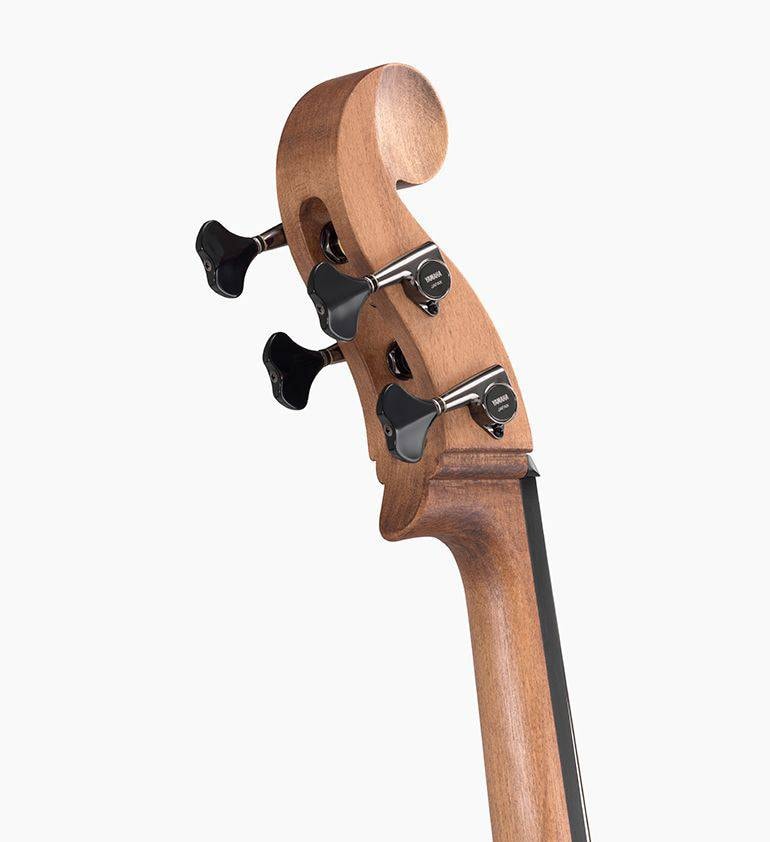
Additionally, like the other model, this one also now supports nickel-metal hydride batteries, and the weight has been reduced by about 0.3kg compared to the previous version!
Since the body size appears unchanged, playability should remain the same as with the previous model.
YAMAHA / SVC300F Silent Cello – Specification Summary
- The control section now includes a blend control, equalizer, and tuner functions.
- Equipped with the well-known and optimized “SRT Powered System” from the Silent Series.
- Pegs have been changed to worm-gear pegs.
- While keeping the same body size, the instrument is now lighter, making it playable just like an acoustic instrument.
What did you think?
With this being Yamaha’s first new Silent Cello release in 19 years, comparing the models really highlights what has changed and what has stayed the same, which I think makes things quite interesting!
If this has sparked your interest, I hope you’ll consider checking out the new Silent Cello series.






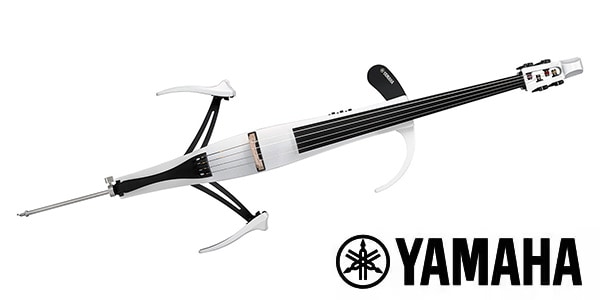
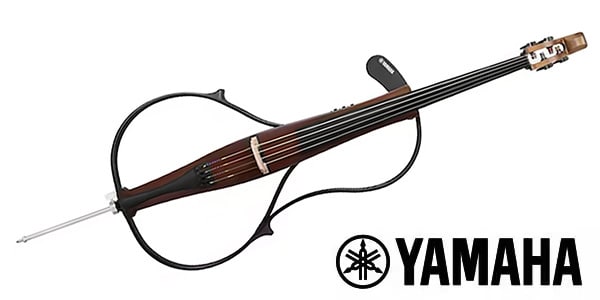
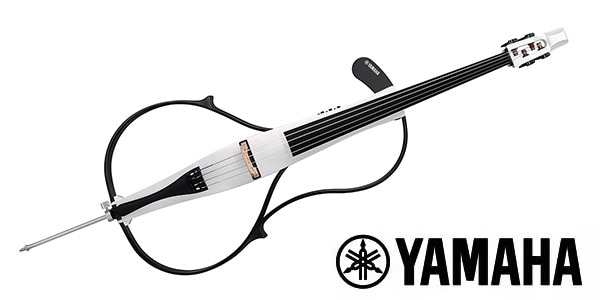
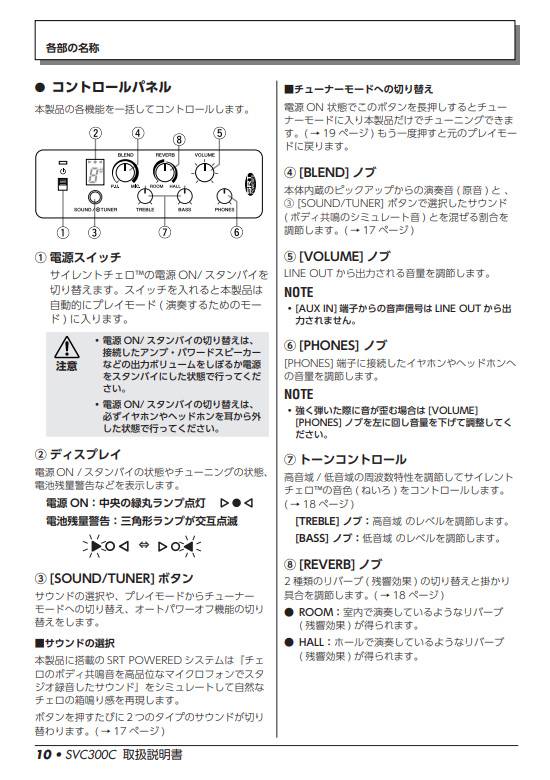








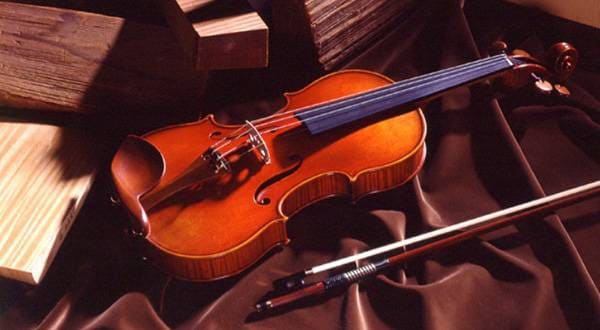
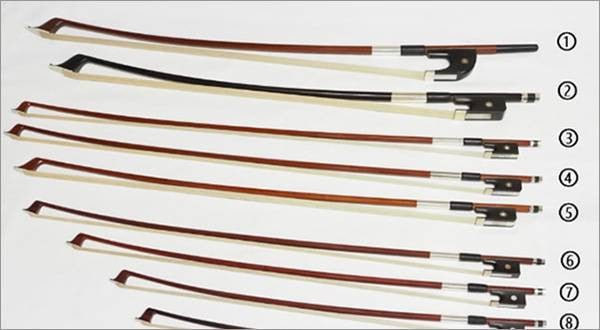
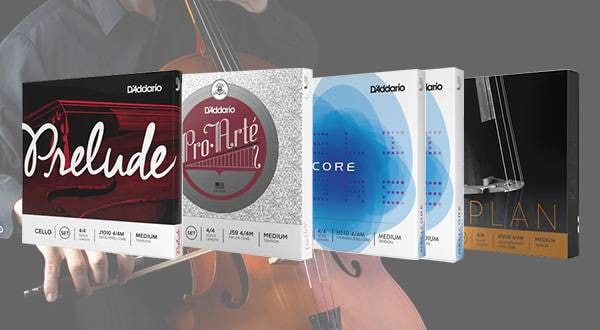


![[For Beginners and Students!] Recommended Cello Strings and Essential Items](/contents/uploads/thumbs/2/2024/10/20241029_2_29189_1.jpg)



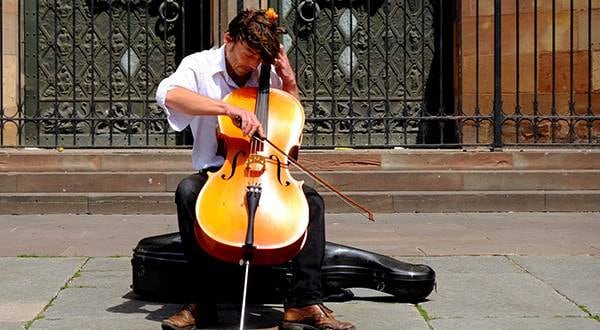
 チェロの構え方
チェロの構え方
 チェロの弦交換
チェロの弦交換
 エレクトリックチェロ 入門ガイド
エレクトリックチェロ 入門ガイド
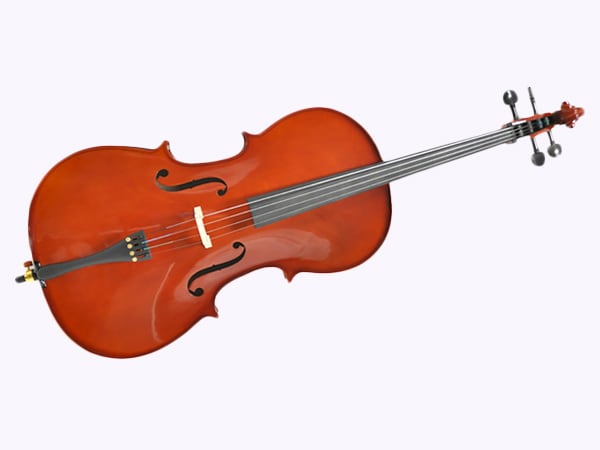 チェロ 入門ガイド
チェロ 入門ガイド
 チェロの弓の調整と松脂の塗り方
チェロの弓の調整と松脂の塗り方
 チェロの調弦 チューニング
チェロの調弦 チューニング
